Are you considering keeping a pet tarantula spider? Spiders are not a conventional choice of pet, but they are certainly an unusual one and can be both interesting and educational. I know that from personal experience, and, although I'm not claiming to be an expert on the subject, the article below should provide you with a good insight into the pros and cons of having one or more tarantula spiders as pets.
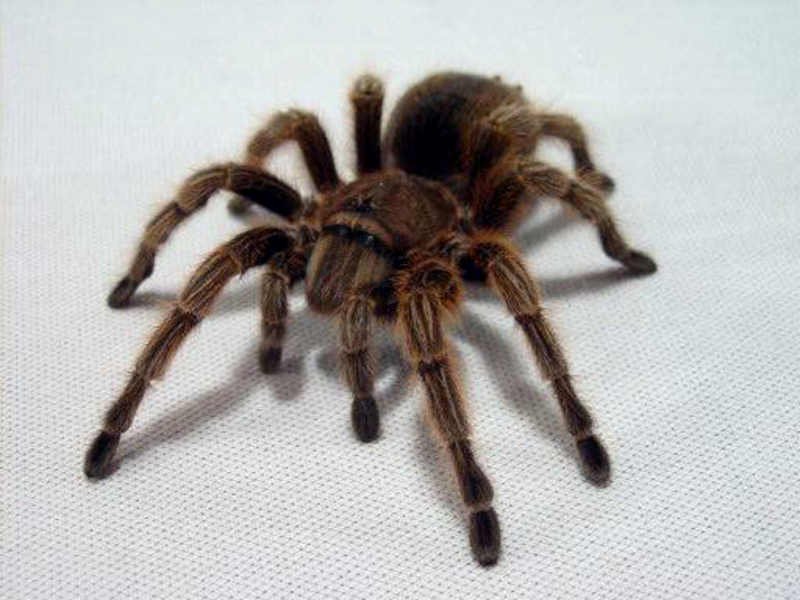
Keeping Spiders as Pets
When you are thinking of buying a pet, what comes to mind first? Cats? Dogs? A cute little hamster, maybe? Probably not a spider. However, as unconventional as they may be, spiders make ideal pets for the right person.
Some people who choose to keep spiders might do so just because they like the idea of having an unusual pet. It is not unheard of either for someone that is frightened of spiders to buy one in the hopes that by facing their fears, they may learn to overcome them. It is probably not the best of reasons to buy a pet, but it does happen. I know because that is one of the reasons that I became interested in keeping spiders.
Other kinds of spiders are kept as pets, but tarantulas are by far the most popular choice, and there are many varieties. In some ways, a tarantula might seem a boring choice for a pet. You cannot take them out for a walk, and they won’t fetch a stick for you, but they can be fascinating to watch, and if you choose a breed that lends itself to easy handling, they can also be rather fun.
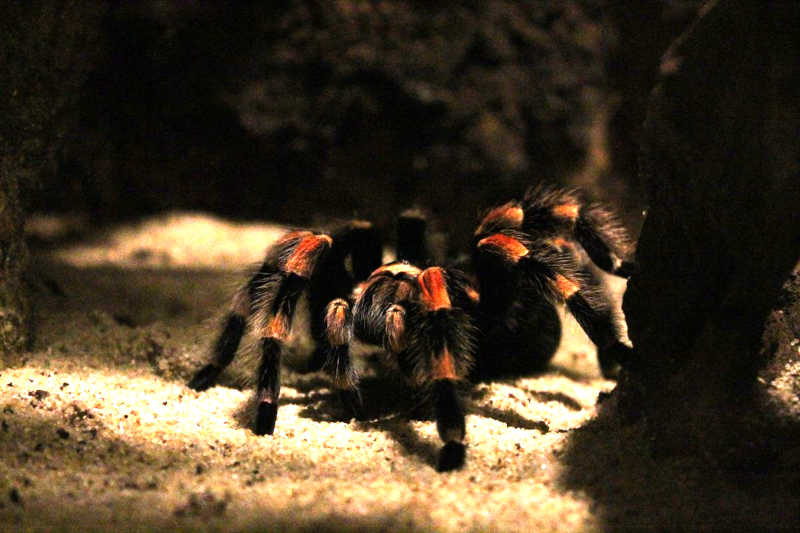
How to Choose the Right Tarantula Spider
There are many different species of tarantula spider available to buy as pets, but for the purpose of this article, I will stick to just three: the pink-toed tarantula, the curly-haired tarantula, and the Chilean rose tarantula. These three, in my opinion, present the best choice for a beginner, because they all share a rather placid nature and are, therefore, less likely to bite—if you choose to handle them, that is. And not all spider keepers do.
The 3 Best Tarantula Species for Beginners
- Pink-Toed Tarantula
- Curly-Haired Tarantula
- Chile Rose Tarantula
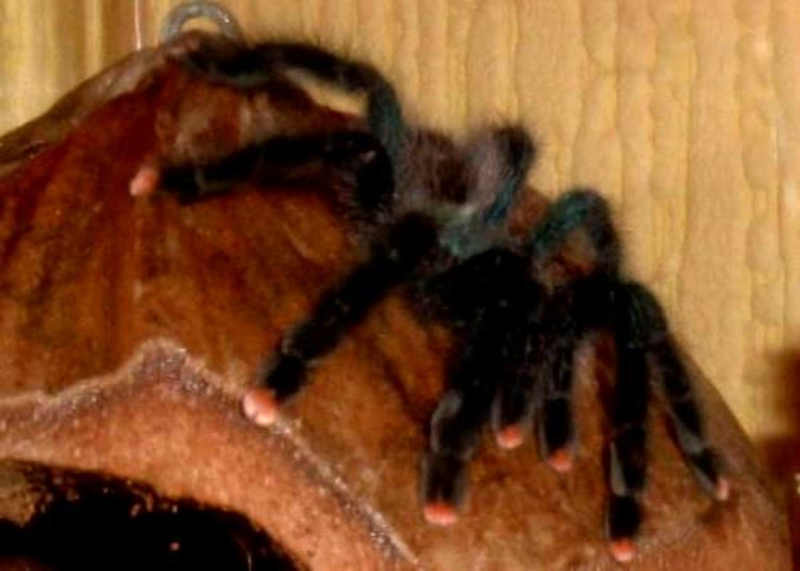
1. The Pink-Toed Tarantula
Pink-toed tarantulas are an arboreal species, so in their natural habitat, they would make their homes somewhere high up, perhaps in a tree or on the side of a building. They would never choose to make their homes on the ground, though. Pink-toes can be quite industrious and build themselves quite complex silk hides to live in. These hides are surprisingly strong and feel a little like cloth to the touch. It is rather amazing to watch the spiders build them.
In my experience, though, the main problem with pink-toes is that once they have built their hide, they tend to stay hidden away inside it, and I often do not see mine for weeks at a time, except for perhaps the tips of its legs sticking out from the top of its home. Pink-toes are also very good at jumping, and my wife once got quite a scare when mine jumped out of my hand and ran up the bedroom wall.
On the few occasions that I have handled my pink-toe, it has walked from one of my hands to the other a few times and then just settled down in the middle of my palm and appeared to almost go to sleep. It has a nice enough nature, and it is quite pretty for a spider, but it is the most boring of my pets (except when it is running up the bedroom wall, that is).
2. Curly-Haired Tarantula
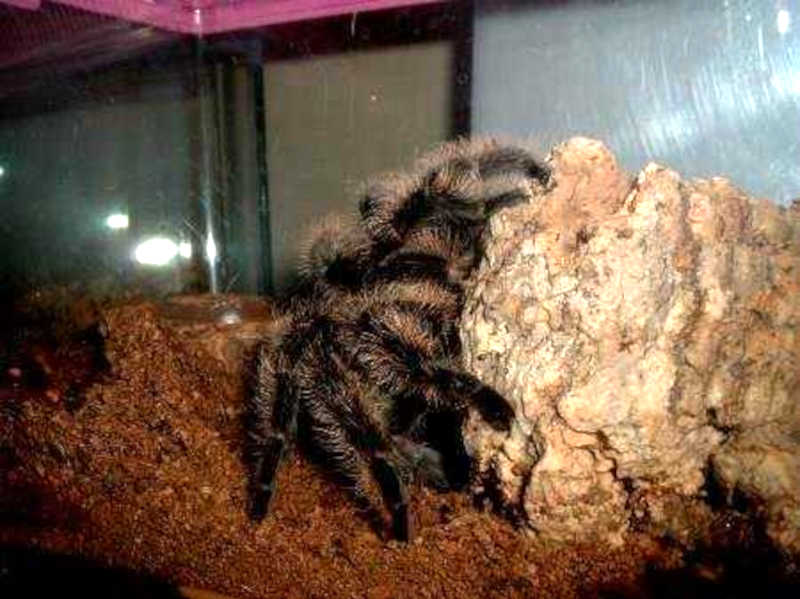
Curly-haired tarantulas tend to be quite active, so you do see more of them. They are a terrestrial species, and in the wild, they live on the ground (or, more precisely, underneath the ground because they are burrowing spiders). I have seen mine spend hours and hours walking around the wall of its home, and I get dizzy just watching it.
I do not know if this is the same with all members of the species, but my curly-haired tarantula never seems keen to come out, and when I do manage to coax it onto my hand, it usually just sits there and looks at me. It is very hard to encourage it to walk from one hand to the other. Would you believe it, though? Putting it back into its home is just as hard because it clings to my hand. The awkward little so-and-so. Well, not so little. It is actually quite a handful; in fact, if it spreads its legs a little, it can fill two hands quite easily—and I've got quite big hands!
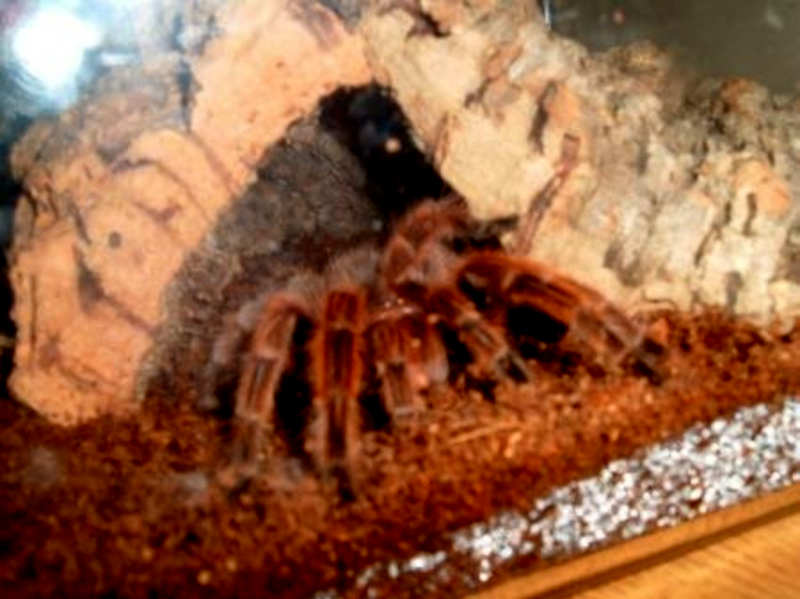
3. The Chilean Rose Tarantula
Chilean rose tarantulas are, in my opinion, the best choice for a first pet spider. Like their curly-haired cousins, they are terrestrial, but they tend not to burrow, preferring instead to hide underneath a piece of propped wood or something similar.
Mine is visible quite a lot and feels like part of the family. We sit on the couch, and it sits on its log. It is usually quite happy to come out as well. I just put one hand in front of it and tap its behind with one of my fingers, and it jumps straight onto my palm. It may sit there for a second or two, but never for long. It loves to walk from hand to hand and up and down my arm and rarely gets bored of it. It is a great spider and is a lovely cocoa color.
Chilean roses come in a few different colors, and I have seen one or two that are a lovely, delicate shade of pink.
Caring for Your Tarantula
Tarantula spiders are very low-maintenance pets. That cat mentioned at the beginning of this article will not only need feeding once or twice a day but will also need plenty of love and attention. A dog may need more attention still. A spider, on the other hand, can be left to its own devices and will not fare any worse for it.
Housing Your Tarantula
People use a variety of different things to house tarantulas.
- A plastic fish tank with a tight-fitting lid is probably the cheapest option. Here in the UK, you can buy one for about £5. The very best option, in my opinion anyway, is probably a purpose-built glass vivarium, and your local dealer should probably be able to offer you advice about what will be the best for each breed of spider.
- Arboreal spiders like the pink-toe prefer something taller, whereas the traditional cube shape would be a better bet for terrestrial species like Chilean roses and curlies.
- Some spider keepers choose to use verticulite for the bottom of their vivariums, but I prefer to use a kind of peat substance that you can buy as a dried block from your local dealer (just add water and watch it expand). I actually buy mine from our local pound shop because it is cheaper. They sell it for use as potting compost, but it is just the same stuff as the pet shop sells.
- You will also need a heat mat. You stand this underneath the vivarium, but make sure that only half of your viv is heated. That way, your spider can choose to move if it gets too hot or too cold.
- A spray bottle full of tap water is also a necessity. Pink toes prefer their homes to be quite humid so you will need to spray inside the viv once or twice a day, making sure that the peat is nice and damp. But not wet! Chileans are a different matter and their homes need only a light spraying maybe once a day or perhaps only every other day. If their home is too dry, a good indication will be the fact that they will tend to spend a lot of time standing over their water bowl. Curly-haired tarantulas prefer their homes just a little more humid than a Chilean does, but not nearly as damp as a pink toe would like.
Important
You must not let any spider dehydrate! Spiders do not have muscles; their bodies work on a system that is more akin to hydraulics, and they force body fluids into different areas of their anatomy in order to move. A dehydrated spider soon becomes an immobile spider and then a dead spider.
Feeding Your Tarantula
Tarantulas are not big eaters, and generally only need feeding two or three times a week. Live insects are the preferred dish of the day, and crickets tend to be the staple for my tarantulas. My local dealer stocks both brown and black crickets, and I tend to alternate between the two.
Occasionally I buy locusts for a change, but I never feed my spiders with either wax worms or mealworms, not because they cannot eat them, but because if the spiders don’t get them straight away, the worms tend to hide in the viv. Mealworms are particularly good at burrowing.
When it comes to their eating habits, spiders are a law unto themselves, and it is not unheard of for tarantulas to go for several months without food.
As far as water goes, Water Bites is the most popular choice. It is a kind of gel that comes dry-packed in a plastic sachet and expands by an almost magical amount when added to water.
Spiders are not the only exotic pet I keep, and so I need to always have a stock of crickets in my home. If I only kept spiders, I would probably catch insects from the garden because spiders don’t eat much or often, so it would be pointless for me to keep buying crickets that might die before I used them.
Handling Your Tarantula
Every spider keeper will have his or her own opinions about what makes the best pet. I have already told you mine. You cannot handle all species of spider, however. Some species, like Thai blacks, for instance, are incredibly aggressive, and if you put your hands or fingers anywhere near them, they will bite. I have never been bitten myself but have been told that it feels similar to a bee or wasp sting, and although tarantulas are poisonous spiders, the venom is usually harmless to humans.
Safety Note
The greatest danger presented by being bitten by a tarantula spider is that you might have an allergic reaction to the venom.
The greatest danger presented by being bitten by a tarantula spider is that you might have an allergic reaction to the venom. So, all in all, it is best to try not to get bitten in the first place. Species like Chilies etc, are usually pretty placid, and even if they were having real bad hairy legs day, they would tend to warn you of their mood rather than just biting you. All of the species that I have recommended as a good choice for a first pet spider have urticating hairs, which they can flick when they are annoyed. It is a natural defensive mechanism, and if you should get one in your skin, it is rather painful. So if your spider is flicking hairs at you, think twice about picking it up at that point in time. Curlies are the worst for this, and sometimes, rather than flick, they just fire them at you.
The second warning your spider will give you if it is getting really peed off at you is that it will rear up and expose its fangs. When it does this, it is saying back off, dude, or I will bite you, so you had better back off, or it will.
None of my spiders have ever reared up like this, but I know what it means if they do. If you are considering keeping a pet spider, you need to be aware of it too. If your spider is happy to come onto your hand, as is often the case–especially with chilies–then just put your hand in front of it and use your other hand to encourage it to step into your palm.
A Word of Caution
A spider’s body is very fragile. Even a little fall of a few feet can kill it, so try to keep your hand above a table or the floor, anything at all. Just make sure that if you do drop your spider, you do not drop it far. Nobody likes to watch a pet die.
This article is accurate and true to the best of the author’s knowledge. It is not meant to substitute for diagnosis, prognosis, treatment, prescription, or formal and individualized advice from a veterinary medical professional. Arachnids showing signs and symptoms of distress should be seen by a veterinarian immediately.